From Philadelphia (Pop. 1.5 million) to Mercersburg, Franklin County (Pop. 1500) and located in over a third of Pennsylvania counties, the Certified Local Government (CLG) program provides exclusive funding and technical assistance for local governments. This week’s post introduces us to Pittsburgh as a CLG and provides a glimpse into the amazing things they are doing through this program.
45 communities in Pennsylvania have a formal working relationship with the Pennsylvania State Historic Preservation Office (PA SHPO) on a variety of preservation-related programs and projects. Known as Certified Local Governments (CLGs) these communities represent a broad geographic, demographic and economic swath across the Commonwealth. The CLG program is one of several federal programs administered by the PA SHPO; in this case, the National Park Service provides guidance, rules and funding for the CLG program.
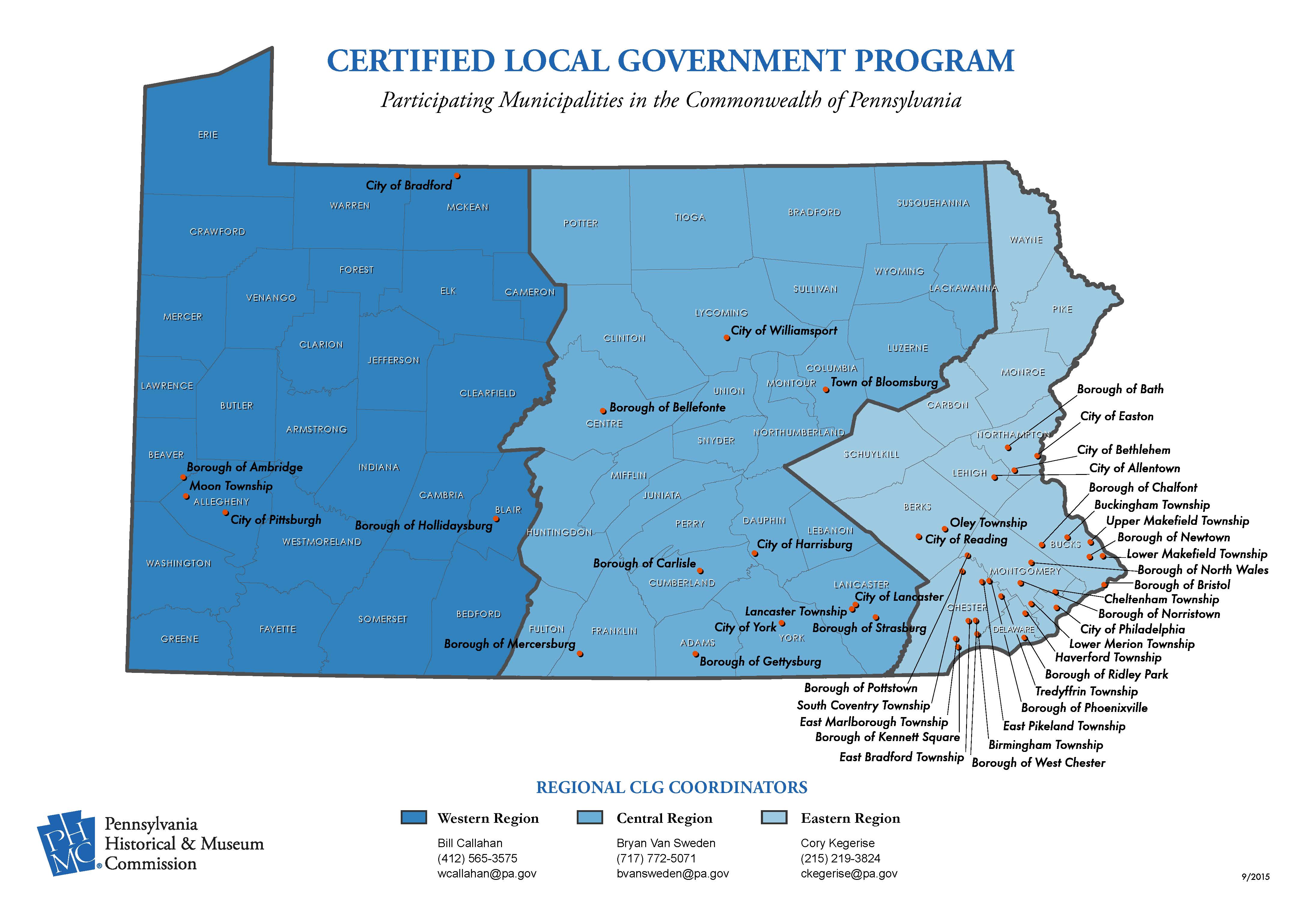
CLGs in Pennsylvania
In the past few years, Pittsburgh has been the subject of national, even international, attention based upon its recovery from economic and demographic devastation created by the loss of heavy industry 30 or so years ago.
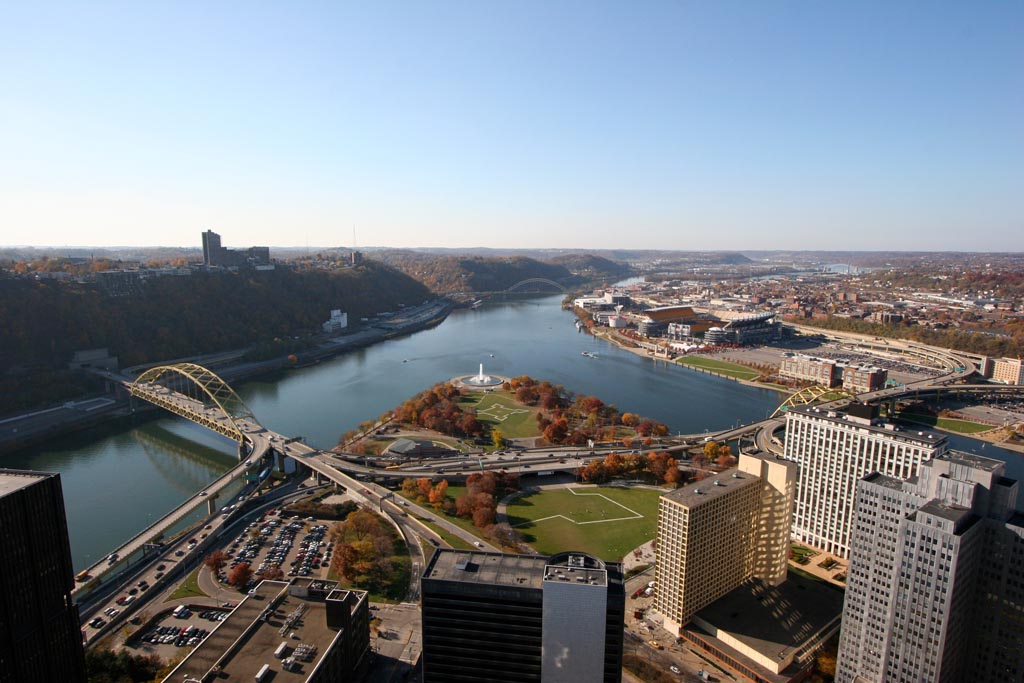
The Pittsburgh Renaissance National Register Historic District includes 1950’s and ‘60’s office buildings and the entirety of Point State Park. Photograph by Ronald C. Yochum, Jr., Pittsburgh History & Landmarks Foundation, August 2011.
Pittsburgh has reinvented itself in a manner that makes it the envy of many former “rust belt” cities. There are many reasons for this transformation but critical among them is recognition by residents and city leaders – public and private – that when it comes to 21st century community and economic development strategies, Pittsburgh’s amazing historic character and natural environment has to be part of the conversation.
Much could be said about preservation projects happening in Pittsburgh outside the bounds of City government, however this post will focus on the work of the City of Pittsburgh itself.
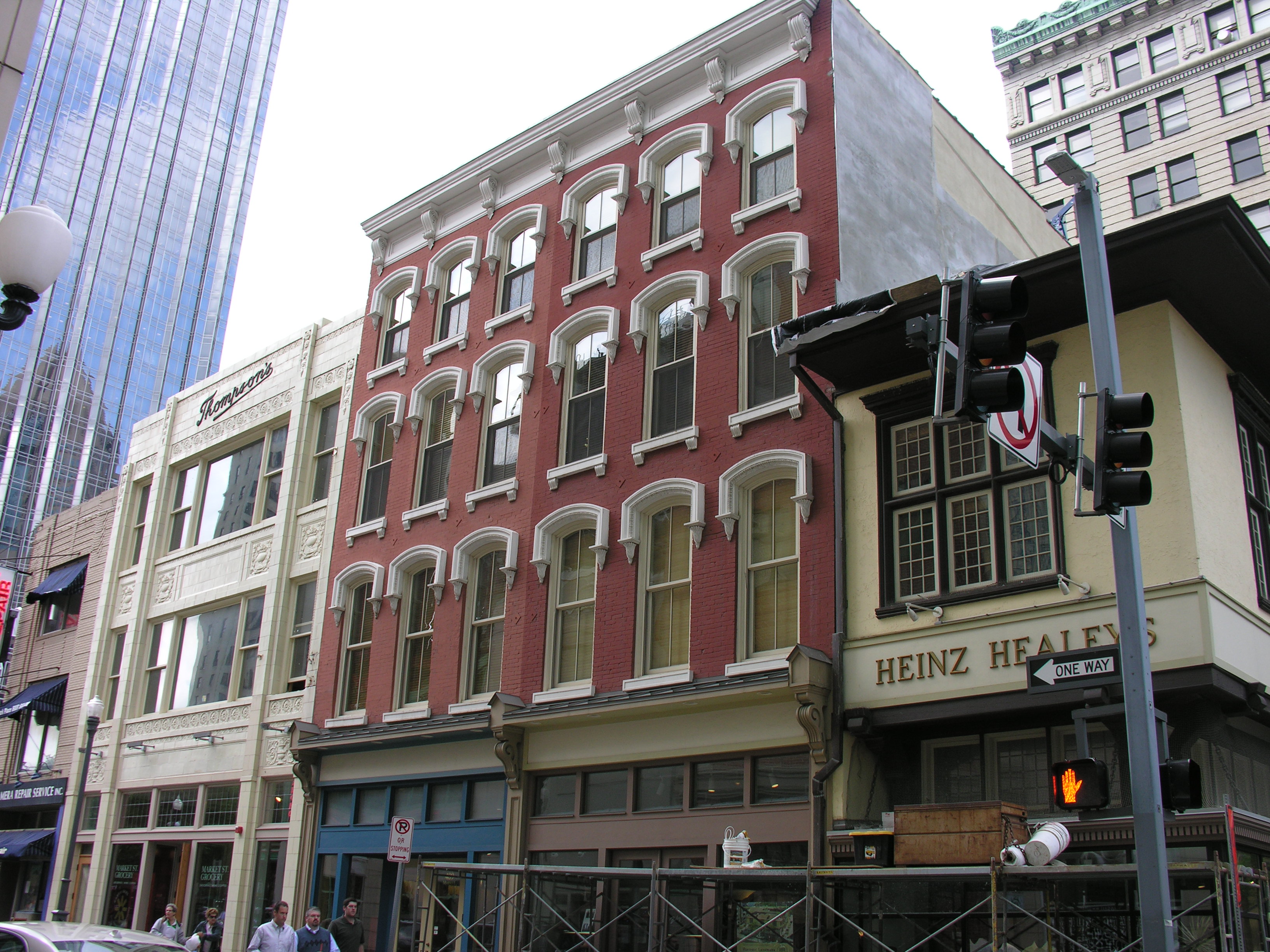
Pittsburgh’s Market Square local landmark district.
Pittsburgh is among Pennsylvania’s older CLG’s, entering the program in 1990. In 2010, the PA SHPO assisted the City in the development of its first historic preservation plan called Preserve PGH. The plan was funded through CLG and Preserve America grants and PA SHPO staff offered technical assistance throughout the process.
Since its completion the City has undertaken a number of preservation projects implementing Preserve PGH, many assisted by PA SHPO staff and funded in part by the CLG and Keystone Preservation Project Grant programs.
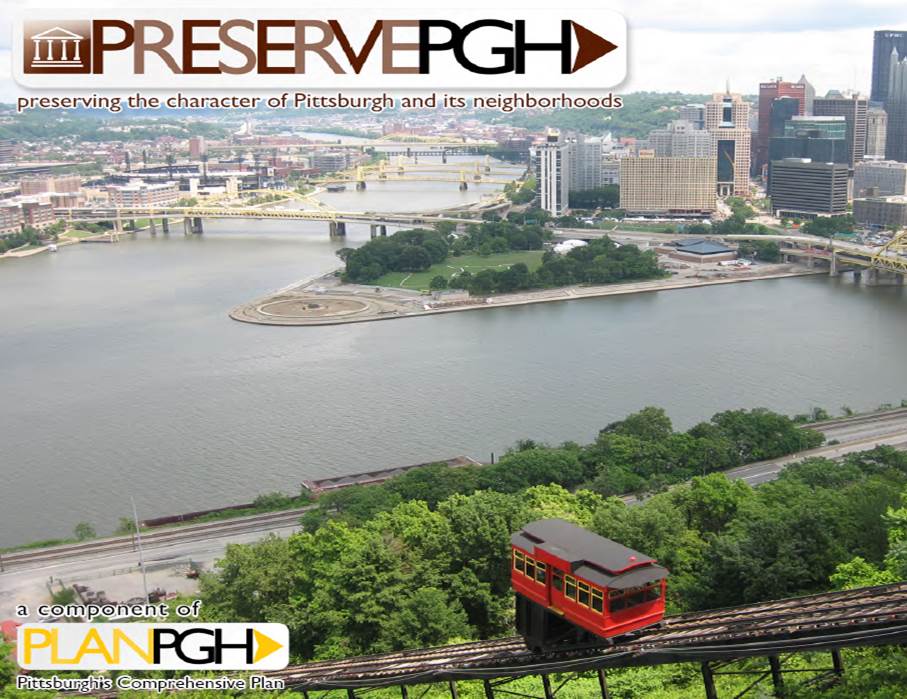
Pittsburgh’s first historic preservation plan, issued in 2010.
In 2012, the City again used CLG funding to help create conservation district guidelines meant to augment Pittsburgh’s preservation ordinance. Conservation districts are a design tool for neighborhoods that may not meet the definition of “landmark” in the City’s preservation ordinance or whose preservation does not require the more robust design ethic obliged by ordinance but whose residents still want to preserve the character and history of their neighborhood.
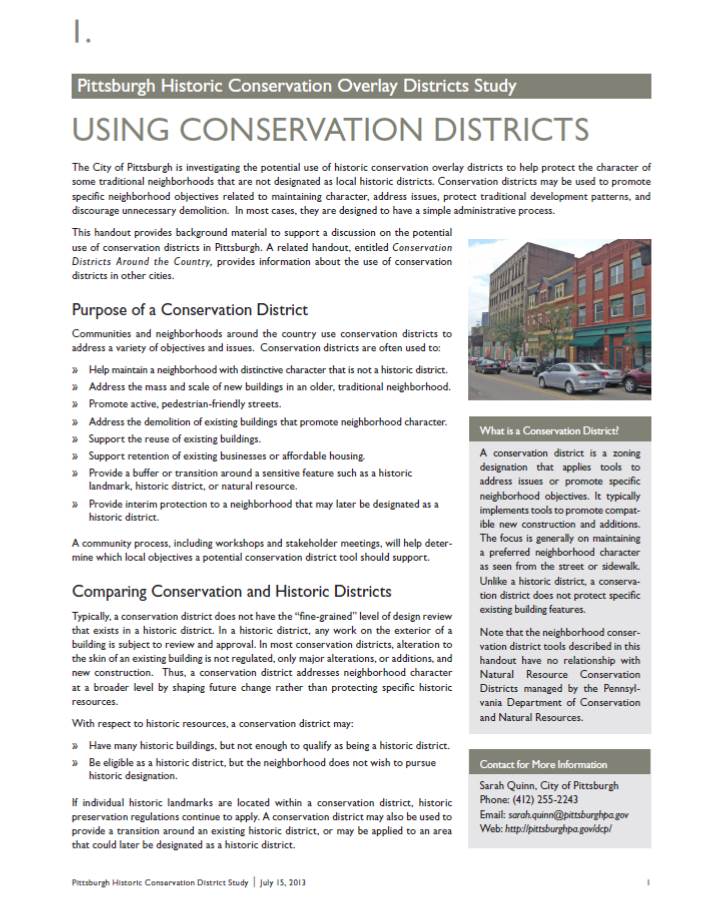
Pittsburgh conservation district guidelines, published in 2013.
Since 2013 Pittsburgh has received additional CLG funding to help leverage historic building surveys, neighborhood by neighborhood. Most of Pittsburgh was surveyed in the 1980’s and few updates to that data have been completed. Given the changes in Pittsburgh the past 30 years, updating the city’s historic buildings inventory is a critical if relatively mundane, nuts-and-bolts preservation undertaking by the City.

A residence in Pittsburgh’s Troy Hill neighborhood, surveyed in 2014.
In 2015 the City received a Keystone Historic Preservation Project grant from the PA SHPO to help fund an economic benefits study by Place Economics. No surprise, the study found preservation has enormous economic value in Pittsburgh. Though it may have been surprising for some to learn just how enormous that value really is.
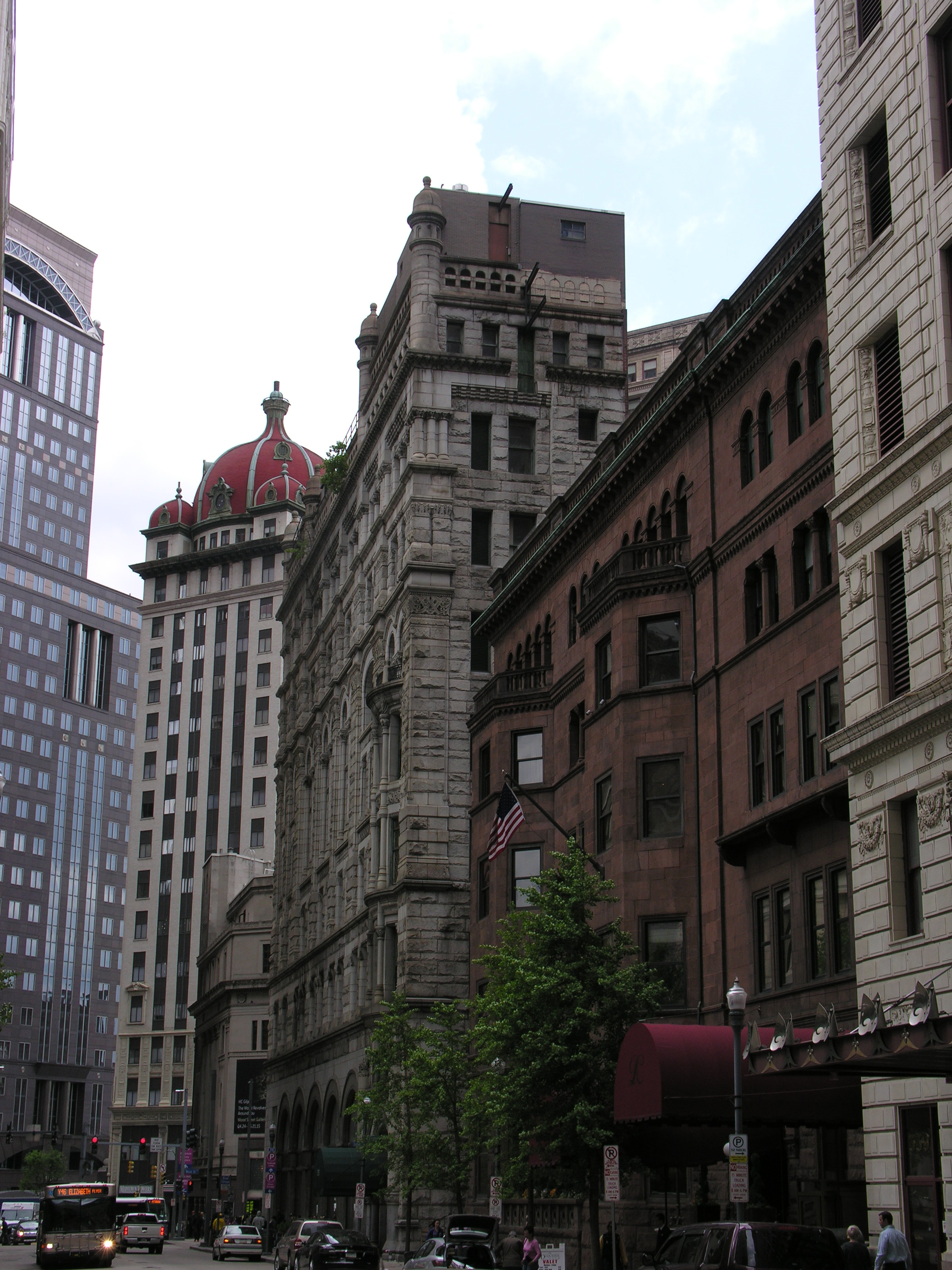
Pittsburgh Central Downtown National Register Historic District.
In 2016, implementing yet another element of Preserve PGH, the City intends to nominate a large portion of the Lawrenceville neighborhood to the National Register of Historic Places, a project that will be funded in part by a Keystone Historic Preservation Project grant. Lawrenceville is one of the city’s most dynamic and rapidly developing neighborhoods, and the expectation is that National Register designation will help raise public awareness, assist planning and development efforts and provide opportunities for rehabilitation investment tax credit projects.
It is an exciting time in Pittsburgh. The city is burgeoning with new ideas, new, right-size development and a new, diverse economy. City leadership has ensured that sustainable, preservation-sensitive development is an integral part of the Pittsburgh reinvention story. Historic preservation is not just along for the ride in this new old city, preservation is part of the reason so much good is happening there—and the PA SHPO is pleased the Certified Local Government program is part of that excitement.
Comment Policy
PHMC welcomes and encourages topic-related comments on this blog. PHMC reserves the right to remove comments that in PHMC’s discretion do not follow participation guidelines.
Commenters and Comments shall be related to the blog post topic and respectful of others who use this site.
Commenters and Comments shall not: use language that is offensive, inflammatory or provocative (this includes, but is not limited to, using profanity, obscene, or vulgar comments); disparage other commenters or people; condone illegal activity; identify the location of known or suspected archeological sites; post personal information in comments such as addresses, phone numbers, e-mail addresses or other contact details, which may relate to you or other individuals; impersonate or falsely claim to represent a person or an organization; make any commercial endorsement or promotion of any product, service or publication.
If you would like to comment on other topics not related to this blog post but related to PHMC, please fill out the PHMC Contact Us Form.
Leave a Reply